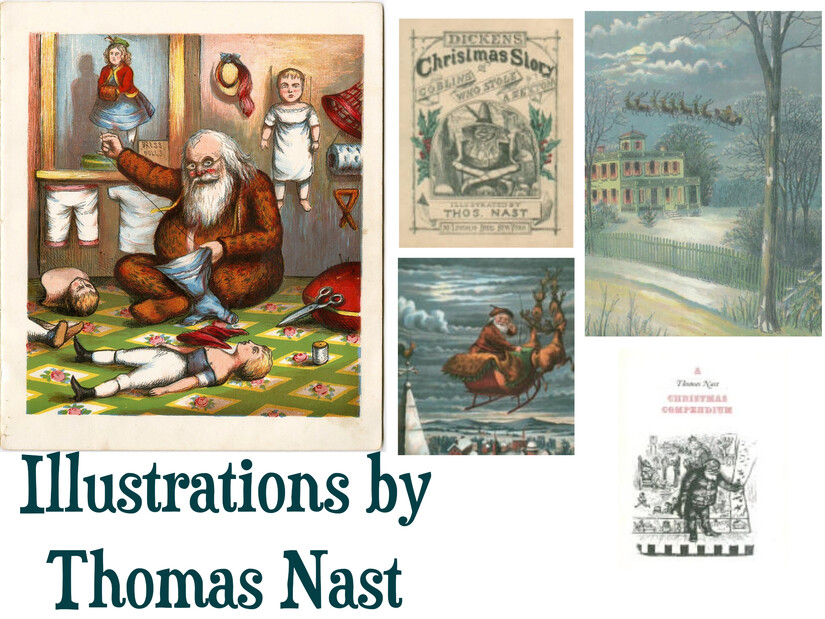Image


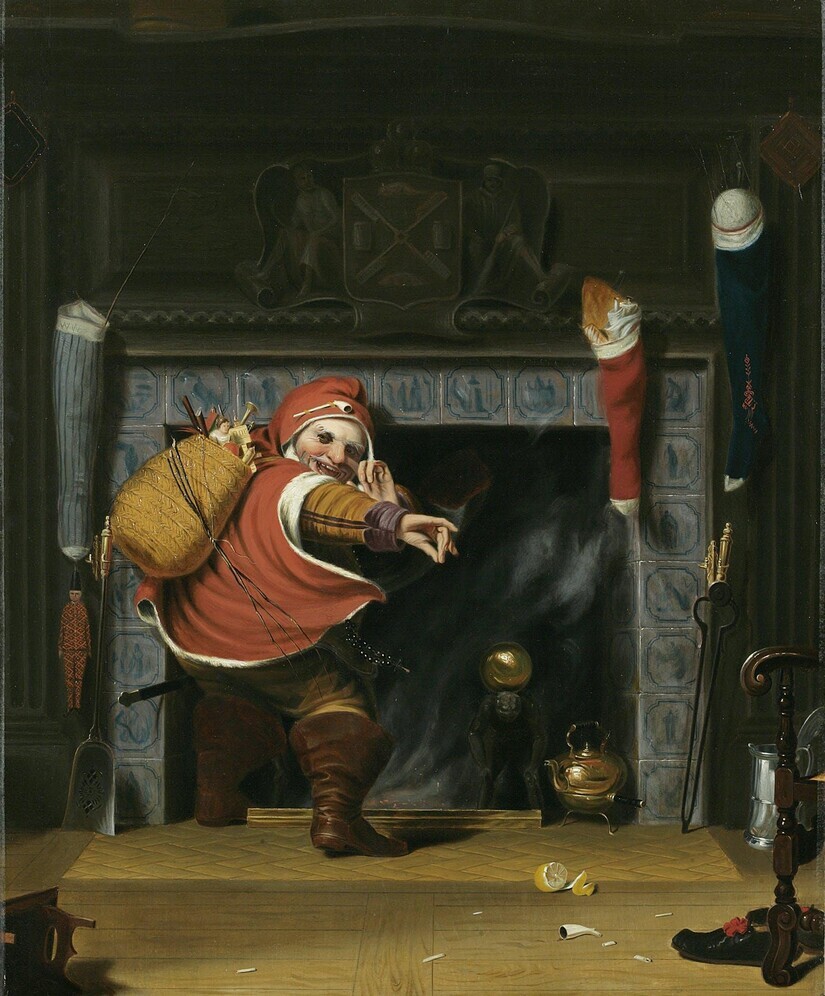 Thomas Walter Weir, St. Nicholas, 1837 (New York Historical Society)
Thomas Walter Weir, St. Nicholas, 1837 (New York Historical Society)Santa Claus comes from the legend of St. Nicholas.
St. Nicholas is said to have lived from around 270 A.D. to 343 A.D. in the village of Patara – modern-day Myra, Turkey. St. Nick was famous for his piety and kindness. It is said he gave away all his inherited wealth and traveled the countryside helping the poor and sick. To this day St. Nick is known as the protector of children and sailors.
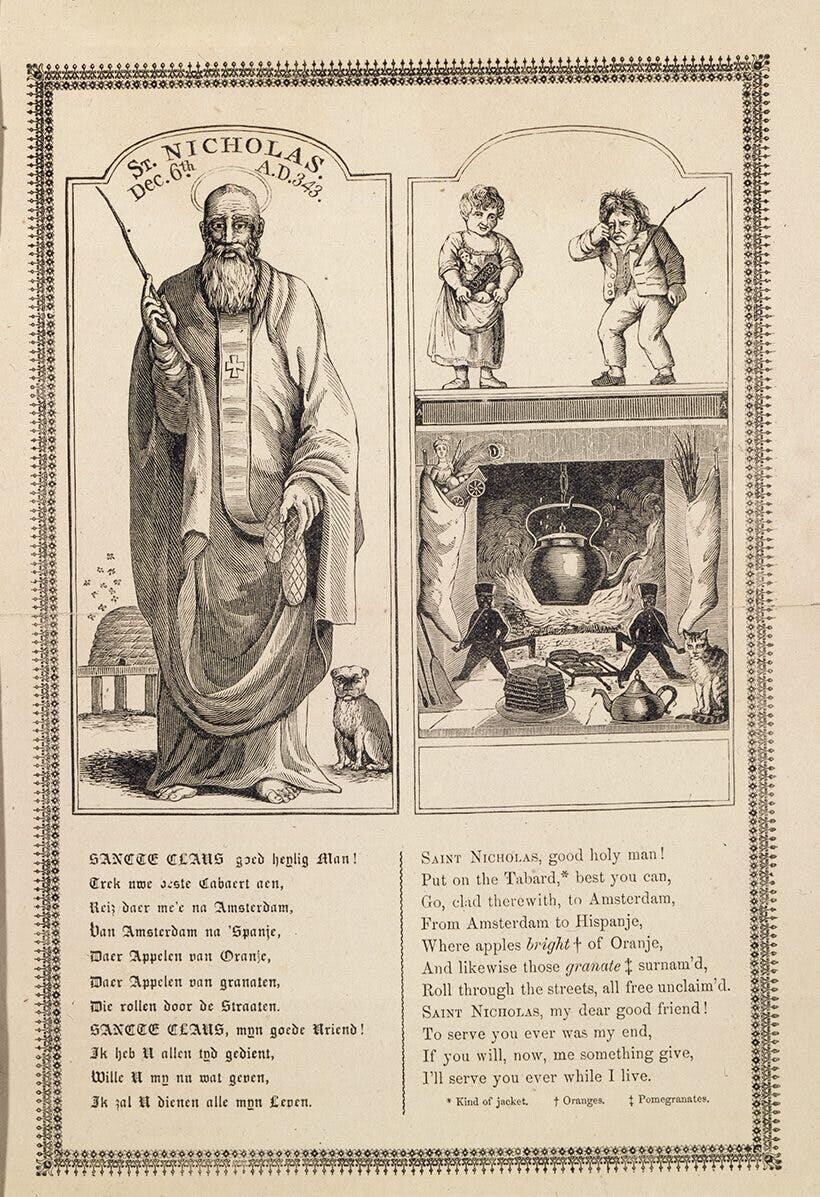 This image of St. Nick preserves his history as a bishop who gives gifts to good children in stockings hung by the chimney, while disappointing naughty kids.
This image of St. Nick preserves his history as a bishop who gives gifts to good children in stockings hung by the chimney, while disappointing naughty kids.St. Nicholas is said to have died on or around December 6th. On this day many gather to commemorate the anniversary of his death on a day that has become known as the Feast of St. Nicholas.
Caroline Wilkinson is a British anthropologist best known for her forensic anthropology work in developing images of St. Nicholas. She uses forensic facial reconstruction to recreate the face of St. Nicholas from his skeletal remains.
Below are images of what researchers believe St. Nicholas looked like.
 The second picture on the top is a Forensic Reconstruction from 2014, Face Lab at Liverpool John Moores University
The second picture on the top is a Forensic Reconstruction from 2014, Face Lab at Liverpool John Moores UniversityIn 1773, a New York Newspaper reported on groups of Dutch families gathering to celebrate the feast of St. Nicholas. The Dutch called him Sint Nikolaas or Sinter Klaas for short.
All the customs, traditions, foods, and stories we know so well as a part of the Christmas holiday developed from a variety of sources, most commonly the Dutch celebrated Feast of St. Nicholas.
Stockings hanging over a fireplace, mulled cider, gift exchanges, decorating a Christmas Fir, and more holiday traditions are often accredited to Charles Dickens’ “A Christmas Carol” (1843). However, Dickens got most if not all his holiday cheer ideas from a man named Washington Irving, who first published “The Sketchbook of Geoffrey Crayon” in 1819.
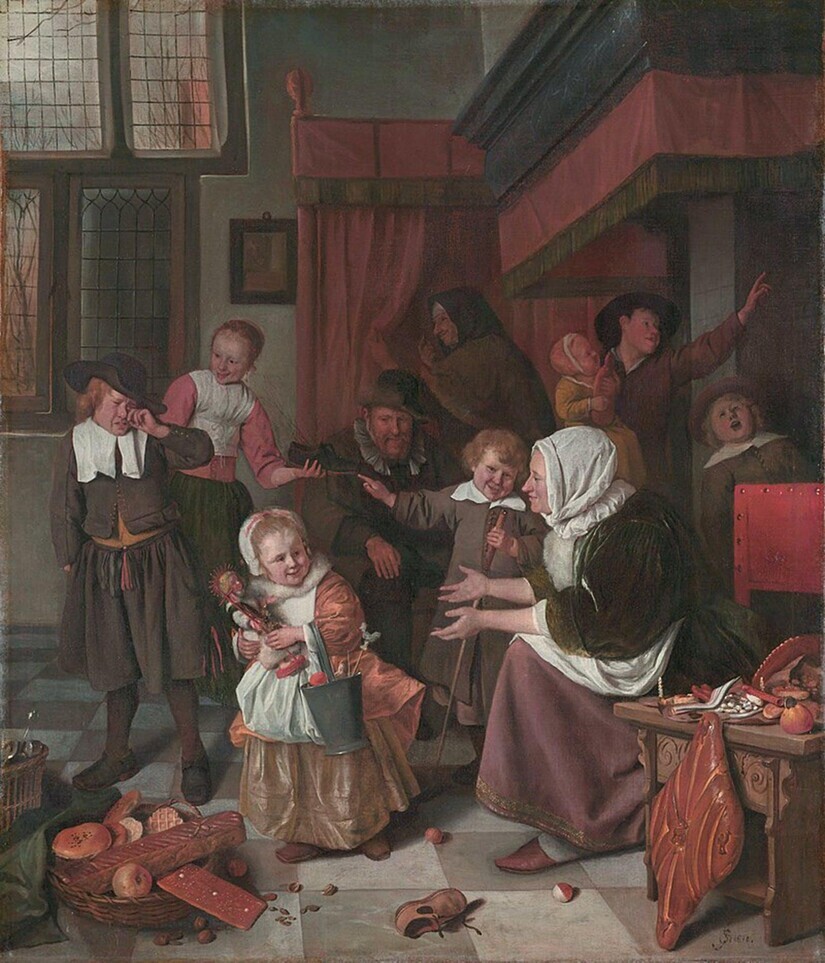 Dutch master painter Jan Steen portrays a family celebrating the Feast of St. Nicholas.
Dutch master painter Jan Steen portrays a family celebrating the Feast of St. Nicholas.Irving can be credited for the inception of the Halloween holiday as well as for bringing the traditional Christmas celebration to America.
In Irving’s short essays he describes all the qualities of Christmas we know so well — the decorations, food, fires roaring to keep us warm, St. Nick flying over houses in his wagon while children slept, wassail (or a potent, highly spiced, wine-based punch; what we may come to know as mulled cider), and many more yuletide traditions.
The jolly fat man dressed in a red suit, pulled in a wagon by reindeer, sneaking down chimneys to deliver presents, that we know today owes its development to an illustrator, political cartoonist, and Morristown, NJ resident named Thomas Nast (1840–1902).
 Christmas Eve-Santa Claus Waiting for the Children to Get to Sleep, Harper’s Weekly, January 3, 1874
Christmas Eve-Santa Claus Waiting for the Children to Get to Sleep, Harper’s Weekly, January 3, 1874Nast was born in Germany where he grew up hearing tales of St. Nicholas. Nast originally drew Santa Claus for an illustrated book published by McLoughlin Brothers. In the early drawings, Santa Claus was an elfish figure in a brown fursuit. However, as popularity for Santa Claus grew and Nast continued his Christmas drawings for McLoughlin Brothers, Santa Claus adopted the red suit and jolly persona we know so well today.
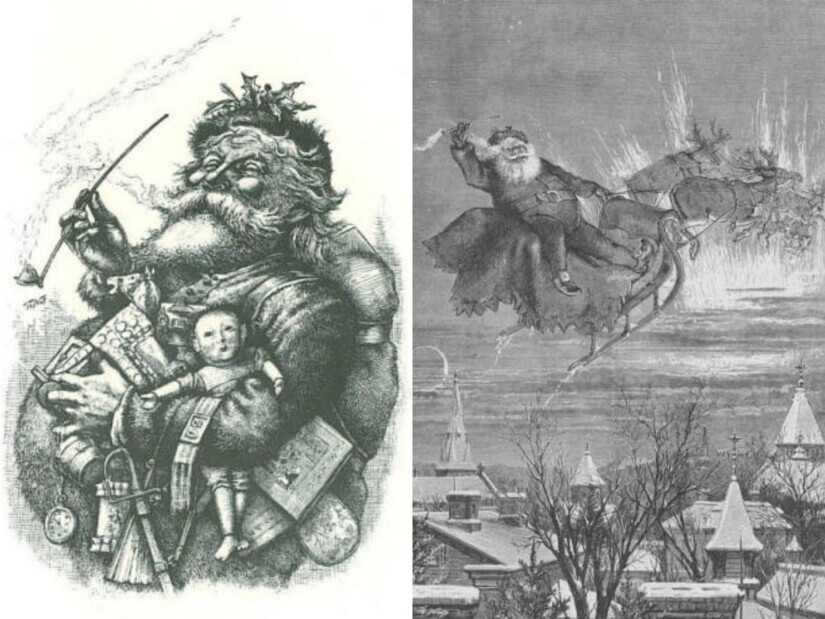 L: Merry Old Santa Claus, Harper’s Weekly, January 1, 1881; R: “Merry Christmas to all, and to all a good-night”, Harper’s Bazaar, January 4, 1879
L: Merry Old Santa Claus, Harper’s Weekly, January 1, 1881; R: “Merry Christmas to all, and to all a good-night”, Harper’s Bazaar, January 4, 1879Nast would draw these Christmas illustrations until 1886, along the way using his home of Morristown as the backdrop for many of the famous, early Santa Claus drawings.
Above (right) you can see an illustration by Nast where Assumption Church, Morristown Baptist Church, Methodist Church, St. Peter’s Church, and the Presbyterian Paris House can be seen in the backdrop of a flying Santa Claus.
